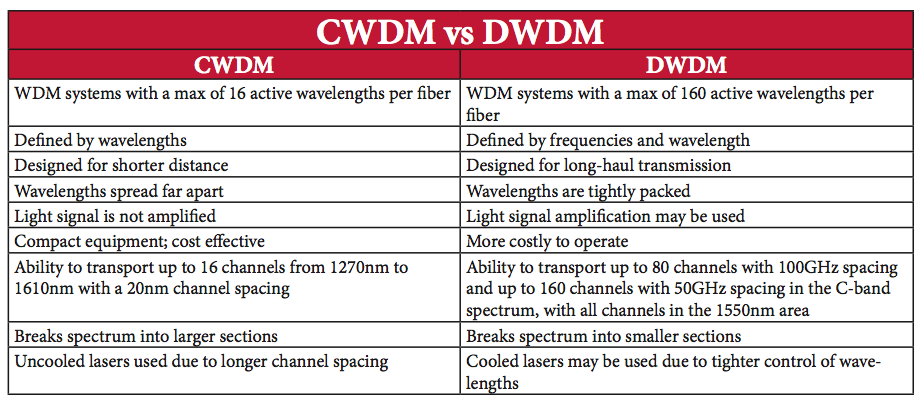In the field of telecommunications, data center connectivity, and video transport, fiber optic cabling is highly desirable. However, the reality is that the fiber optic cabling is no longer an economical or feasible choice to implement for each individual service. Thus using a Wavelength Division Multiplexing (WDM) for expanding the capacity of the fiber on the existing fiber infrastructure is highly advisable. WDM is a technology that multiplexes multiple optical signals onto a single fiber by using different wavelengths of laser light. A quick study of WDM fields will be put on CWDM and DWDM. They are based on the same concept of using multiple wavelengths of light on a single fiber. But they both have their merits and demerits. This article will take a look at the comparisons between CWDM vs DWDM to help you select the most suitable option for you.
CWDM vs DWDM: CWDM preferred for the following factors:
1. Low Cost
CWDM is much cheaper than DWDM because of hardware costs. CWDM system uses cooled lasers that is much cheaper than DWDM uncooled lasers. In addition, The price of DWDM transceivers is typically four or five times more expensive than that of their CWDM modules. Even the operating costs of the DWDM is higher than CWDM. So CWDM is an ideal choice for those who have a limitation in funding.
2. Power Requirement
Compared with CWDM, the power requirements for DWDM are significantly higher. As DWDM lasers together with associated monitor and control circuitry consume around 4 W per wavelength. Meanwhile, an uncooled CWDM laser transmitter uses about 0.5 W of power. CWDM is a passive technology that uses no electrical power. It has positive financial implications for internet operators.
3. Easy Operation
CWDM systems use simpler technology with respect to DWDM. It uses LED or Laser for power. The wave filters of CWDM systems are smaller and cheaper. So they are easy to be installed and used.
CWDM vs DWDM: DWDM preferred for the below reasons:
1. Flexible Upgrade
DWDM is flexible and robust with respect to fiber types. DWDM upgrade to 16 channels is viable on both G.652 and G.652.C fibers. Originally from the fact that DWDM always employs the low loss region of the fiber. While 16 channel CWDM systems involve transmission in the 1300-1400nm region, where attenuation is remarkably higher.
2. Scalability
DWDM solutions allow the upgrade in steps of eight channels to a maximum of 40 channels. They allow a much higher total capacity on the fiber than a CWDM solution.
3. Long Transmission Distance
DWDM employs the 1550 wavelength band which can be amplified using conventional optical amplifiers (EDFA’s). It enhances transmission distance to hundreds of kilometers.
The following picture will give you a visual impression of the differences between CWDM and DWDM.

It is difficult to compare DWDM and CWDM against one another. The true difference is the number of channels needed by the customer and the cost associated with deploying each system. If you still don’t make your mind, please feel free to contact us. FS, a professional and successful telecommunication supplier, offers a variety of CWDM and DWDM equipment and we are welcomed to be at your service.




